Main story: Restaurants support frontline workers with free meals
Program intends to help raise St. Louise staff’s morale during COVID-19
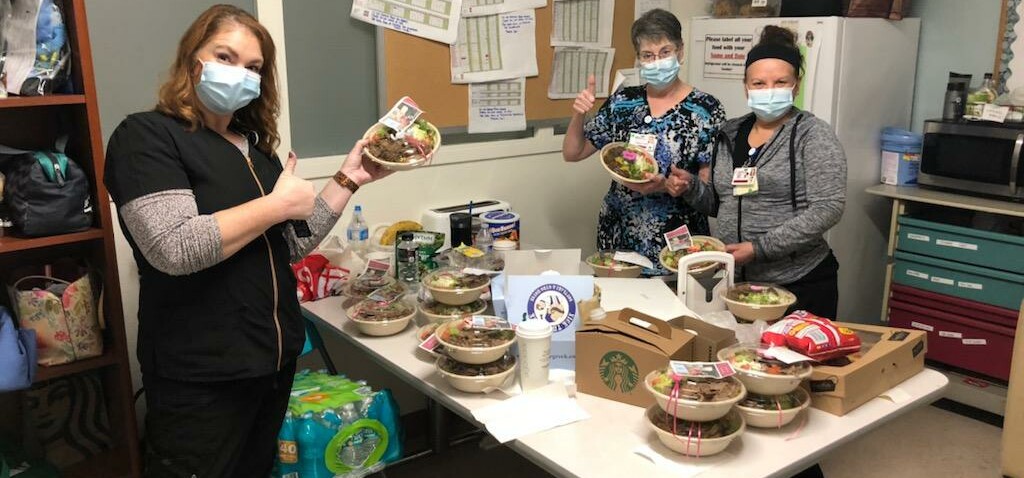
By Marty Cheek
To show gratitude for the strenuous healthcare work nurses, doctors and staff at St. Louise Regional Hospital do and to help keep up spirits, South Valley volunteers are providing them at no cost with healthy and tasty lunch meals cooked by local restaurants.
The Meals for Healthcare Heroes idea came about when Cecily “Cece” Murray, a management consultant for healthcare clinics, read an online article in the New York Times. A restaurant in New York City found a way to create a “win-win” situation when it started a program to receive funding to pay for the preparation and delivery of meals to nurses, doctors and other frontline healthcare workers. Murray thought a similar program could be started to feed South Valley hospital workers while sustaining local eateries.
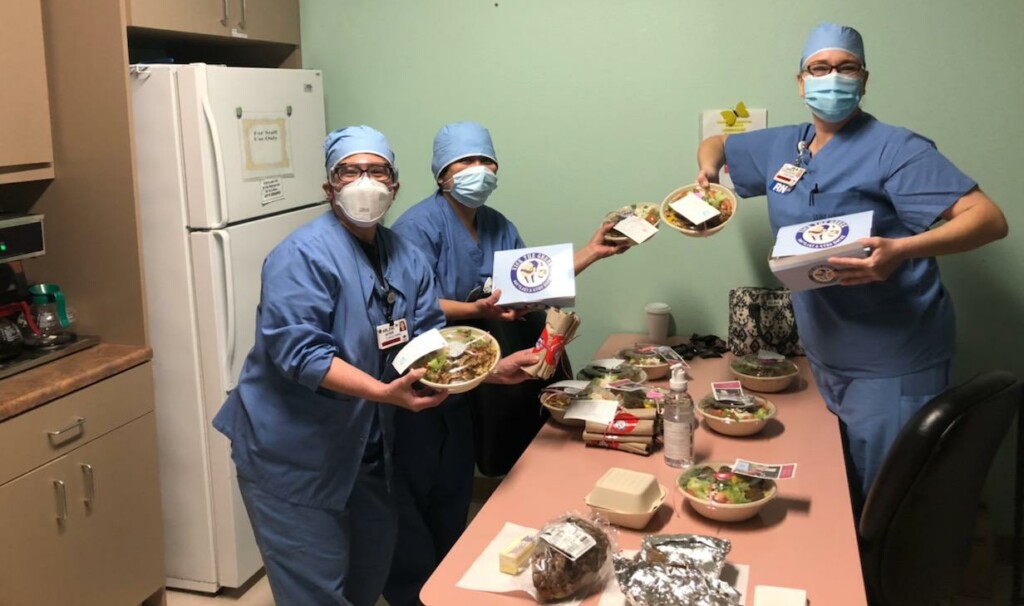 With the help of several Morgan Hill residents including Carolyn Wallace, the 2021 Woman of the Year for the Morgan Hill Chamber of Commerce, real estate agent Denean Richards, and Bubbles & Brew co-owner David Dindak, Murray developed the project for St. Louise staff to enjoy meals from local restaurants. The Morgan Hill Community Foundation is assisting by receiving financial contributions and disbursing funds to participating restaurants through the Morgan Hill Downtown Association. Money donated to the cause by individuals and corporations is tax deductible.
With the help of several Morgan Hill residents including Carolyn Wallace, the 2021 Woman of the Year for the Morgan Hill Chamber of Commerce, real estate agent Denean Richards, and Bubbles & Brew co-owner David Dindak, Murray developed the project for St. Louise staff to enjoy meals from local restaurants. The Morgan Hill Community Foundation is assisting by receiving financial contributions and disbursing funds to participating restaurants through the Morgan Hill Downtown Association. Money donated to the cause by individuals and corporations is tax deductible.
The organizers hope that if the project succeeds to support Morgan Hill eateries, it can also be repeated to benefit Gilroy restaurants and keep them in business by feeding local healthcare workers. With more restaurants participating, it could be expanded to include staff at De Paul Healthcare Center in Morgan Hill and maybe even Hazel Hawkins Memorial Hospital in Hollister to enjoy locally-made meals.
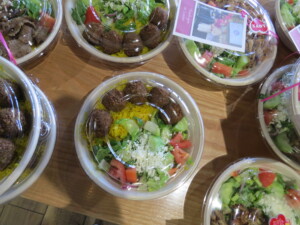 Nick the Greek co-owner Mercedes Little and her son, Adrian, brought large boxes filled with gyro bowls with falafel balls to St. Louise in Gilroy for lunch on Saturday, Jan. 23. They carried them from the car to a meeting room near the hospital’s entrance and the food was later distributed to the various departments during the staff breaks.
Nick the Greek co-owner Mercedes Little and her son, Adrian, brought large boxes filled with gyro bowls with falafel balls to St. Louise in Gilroy for lunch on Saturday, Jan. 23. They carried them from the car to a meeting room near the hospital’s entrance and the food was later distributed to the various departments during the staff breaks.
“It was a really wonderful experience for us to give back,” she said. “Even though our restaurant received compensation for what we were able to produce, which was an important component of this, it still was a good feeling to know that we were giving these meals to people who tirelessly are helping to combat what we’re all experiencing with this COVID stuff.”
Many of the people who work at the hospital have been eating out of vending machines for three months now, she said. They sustain their energy on Granola bars and junk food. So they appreciate getting a meal that’s healthy with vegetables and a protein like chicken or turkey that tastes delicious. The lunches come with a friendly note thanking the recipient.
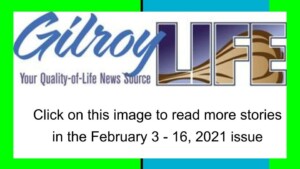 “I felt like Nick the Greek provided a virtual warm hug and it went into those workers’ bellies,” Little said. “I was able to hug them without touching them by providing a nice meal to eat.”
“I felt like Nick the Greek provided a virtual warm hug and it went into those workers’ bellies,” Little said. “I was able to hug them without touching them by providing a nice meal to eat.”
Dindak leads the restaurant group of the MHDA and has connected with most of the owners to see if they want to be involved in the meals program. The majority of them have provided “positive feedback” in expressing a willingness to take part in providing to-go lunches and dinners for St. Louise staff, he said. This includes his own Bubbles & Brews.
“As we get money in we’ll be pushing it right back out,” he said. “We have some big money donors right now. If this works and we continue on, we’re going to reach out to the community at large and see what we can do from the community to draw donations.”
 The curbside-only sale of food has been severely restrictive in bringing in customers to the restaurants. As of Jan. 25, the county will allow limited outside dining after Gov. Gavin Newsom opened the state of California when public health experts saw sustained reductions in COVID-19 cases and hospitalizations.
The curbside-only sale of food has been severely restrictive in bringing in customers to the restaurants. As of Jan. 25, the county will allow limited outside dining after Gov. Gavin Newsom opened the state of California when public health experts saw sustained reductions in COVID-19 cases and hospitalizations.
The Meals for Healthcare Heroes program could play an important role in sustaining the South Valley restaurants if it is supported by the community through donations, Dindak said.
“It’s a win-win. We get some of our staff to keep working. We get to help the staff at St. Louise,” he said. “We get compensated for it. It’s a win-win for everybody.”
The program is helping to boost the morale of St. Louise workers, which was flagging as months of dealing with the pandemic impacted their personal and professional lives, Murray said.
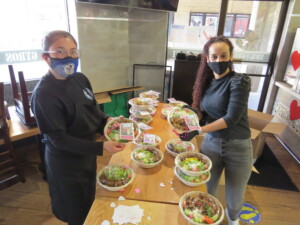 “They are overwhelmed,” she said. “Beds are in low supply. Everyone is just pushed to the limit. It’s been really difficult for them. Especially for the late night staff where it’s very quiet and it feels like a long shift.”
“They are overwhelmed,” she said. “Beds are in low supply. Everyone is just pushed to the limit. It’s been really difficult for them. Especially for the late night staff where it’s very quiet and it feels like a long shift.”
The nurses are wearing a lot of personal protective equipment as they take care of patients with COVID-19. Many times they stay isolated in the hospital room for long periods during the workday, said Peter Coelho, a medical doctor who serves as the physicians executive at St. Louise.
“Many have not taken their vacations, they’ve not taken their paid days off, and they’re just working long shifts day in and day out,” he said. “And they start getting isolated and feel like the world is not with them. When you get the community to step in and give a little gesture of appreciation, it’s huge. It’s crazy the impact it has on morale.”
 Taking care of the continuous flow of COVID-19 patients is not just physically exhausting but emotionally fatiguing too, he said. In December and January as the surge grew in intensity, the hospital saw at least one coronavirus patient die each day. One nurse went home and started crying because she had two patients die on her in one day.
Taking care of the continuous flow of COVID-19 patients is not just physically exhausting but emotionally fatiguing too, he said. In December and January as the surge grew in intensity, the hospital saw at least one coronavirus patient die each day. One nurse went home and started crying because she had two patients die on her in one day.
“When people die on you, it’s part of the business. But when it happens on an everyday basis, when they stop breathing or their heart stops, it’s really heavy on their soul,” Coelho said. “Having this community giving you a small level of appreciation is just gigantic. It doesn’t take much to feel recognized. It doesn’t take much.”
The other thing about COVID is it can be a long illness as the patients struggle lying in beds and connected to ventilators, he said. The usual hospital stays are an average of about three days. COVID patients are there for five, seven, ten days – especially the sicker patients. So the nurses build friendly relationships with them.
“You end up bonding with them when you see them every day,” he said. “And then they die on you. It’s brutal.”
The Meals for Healthcare Heroes project is really about “community helping community” in the South Valley, Richards said.
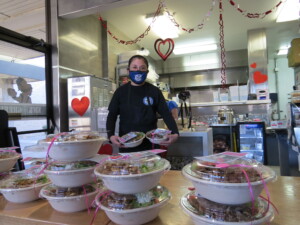 “It’s time for everybody to step up. As a community we need to step up and support each other because during the pandemic we’re really in desperate times,” she said. “We do see the end in sight this year, but not before leaving a large swath of damage in its path.”
“It’s time for everybody to step up. As a community we need to step up and support each other because during the pandemic we’re really in desperate times,” she said. “We do see the end in sight this year, but not before leaving a large swath of damage in its path.”
Making sure local businesses survive the economic crisis component of COVID-19 will help keep the quality of life going in future years, Wallace said.
“When we spend our money outside of Morgan Hill, the tax benefit goes not to the Morgan Hill arena,” she said. “At the moment we only have the program in Morgan Hill. But we can start with a pilot here and make it successful and expand from there into Gilroy.”
